Full filmography of Stanley Kubrick, cinematic genius
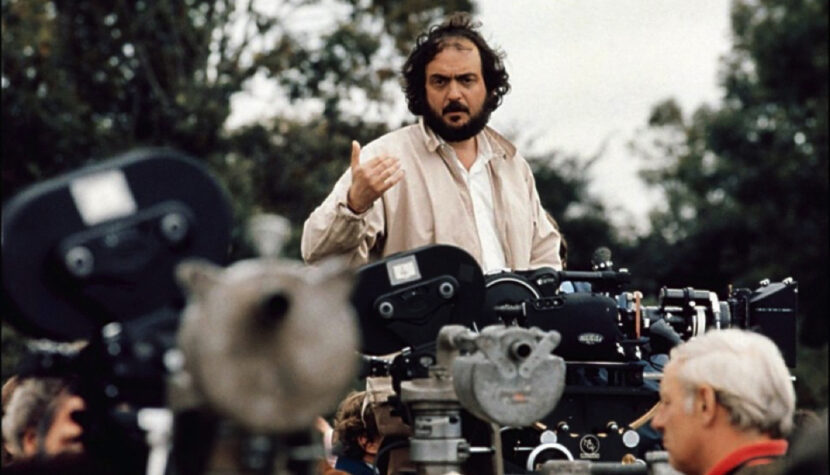
“So Steven Spielberg died and went to Heaven. Archangel Gabriel greets him at the blue gates and says, “God loves your movies. Make yourself at home here. I will fulfill your every wish.” Spielberg replied: “I’ve always wanted to meet Stanley Kubrick. Can you set us up?” Frustrated Gabriel replied, “I can’t really do that for you. Stanley doesn’t want any meetings. I’m sorry.” Suddenly, they both see a bearded man in an army jacket riding a bicycle. Spielberg yells, “Look, it’s Stanley Kubrick! Can you stop him?” And the Archangel Gabriel whispers, “It’s not Kubrick. It’s a God who thinks he’s Kubrick.” Kubrick loved this joke.
Introduction
Brilliant, perfect, legendary, fascinating, outstanding, cunning, mysterious, eccentric, obsessive, megalomaniacal, controversial, haunted, bizarre, demanding, lonely, secretive, crazy, meticulous, unpredictable, merciless, outrageous, mean, overbearing, pissing, enigmatic, provocative – you could use all these epithets for half of the Film Academy. Meanwhile, only one man in the history of cinema shared all of these. Stanley Kubrick made only 13 feature films in 42 years. Most of them are outstanding works, a few hailed as absolute masterpieces of film art. Almost all of them still fascinate with sophisticated issues, amaze with a wide thematic spectrum, provoke radical assessments and delight with formal solutions.

He was born on July 26, 1928, in New York, to Jack and Gertrude Kubrick, American Jews with family roots in the Austro-Hungarian Empire, residing in the Bronx. He inherited two passions from his father, a doctor – chess and photography. Despite his high IQ, teenage Stanley was a mediocre student. Even then, he was bored with formal education, from which he personally gained nothing. The teachers failed to interest him in their lectures. Another thing was photography, to which he devoted himself entirely. At the age of 16, he took a historic photo of a newspaper seller mourning the death of President Roosevelt. The photograph was bought by the prestigious illustrated magazine Look, for which Stanley Kubrick started working a year later.
On May 29, 1948, Kubrick married You Metz, a classmate. Dividing his time between his wife and work, he found space for a new passion – cinema. During the screenings at the Museum of Modern Art, he was fascinated by the works of Welles, Eisenstein, Ophüls, Pudovkin, and Chaplin. Thanks to photography, he came into contact with the world of boxing. In 1951. With $3,900 saved, Stanley Kubrick made the 16-minute documentary Day of the Fight about Walter Cartier’s boxing match with Bobby James. Cartier had previously been the subject of many of Kubrick’s photographs. With the exception of the second camera operator Alex Singer, the score by Gerald Fried, and Douglas Edwards reading the text from off, Stanley Kubrick was responsible for everything else in this film.

In Day of the Fight Kubrick included the first elements that are inalienable components of his later works, i.e. off-screen narration and the camera moving backwards while filming the two walking Cartier brothers. The film was bought by RKO for $4,000, by the way, the highest amount that could buy a documentary at the time. So the financial balance wasn’t great, but Kubrick had enough to decide to quit his job as a photographer and start creating moving pictures. This was followed by the 9′ Flying Padre, a documentary about the Reverend Fred Stadtmueller as he travels by plane in his large New Mexico parish. The film did not make any profits either. Kubrick was briefly forced to support himself and his wife by playing chess for money. Constantly devouring the masterpieces of world cinema, Kubrick also stuffed himself with complete crap. Finally, he decided that even he, a complete amateur filmmaker without a feature debut, could easily make something better than this crap…
Fear and Desire (1953)
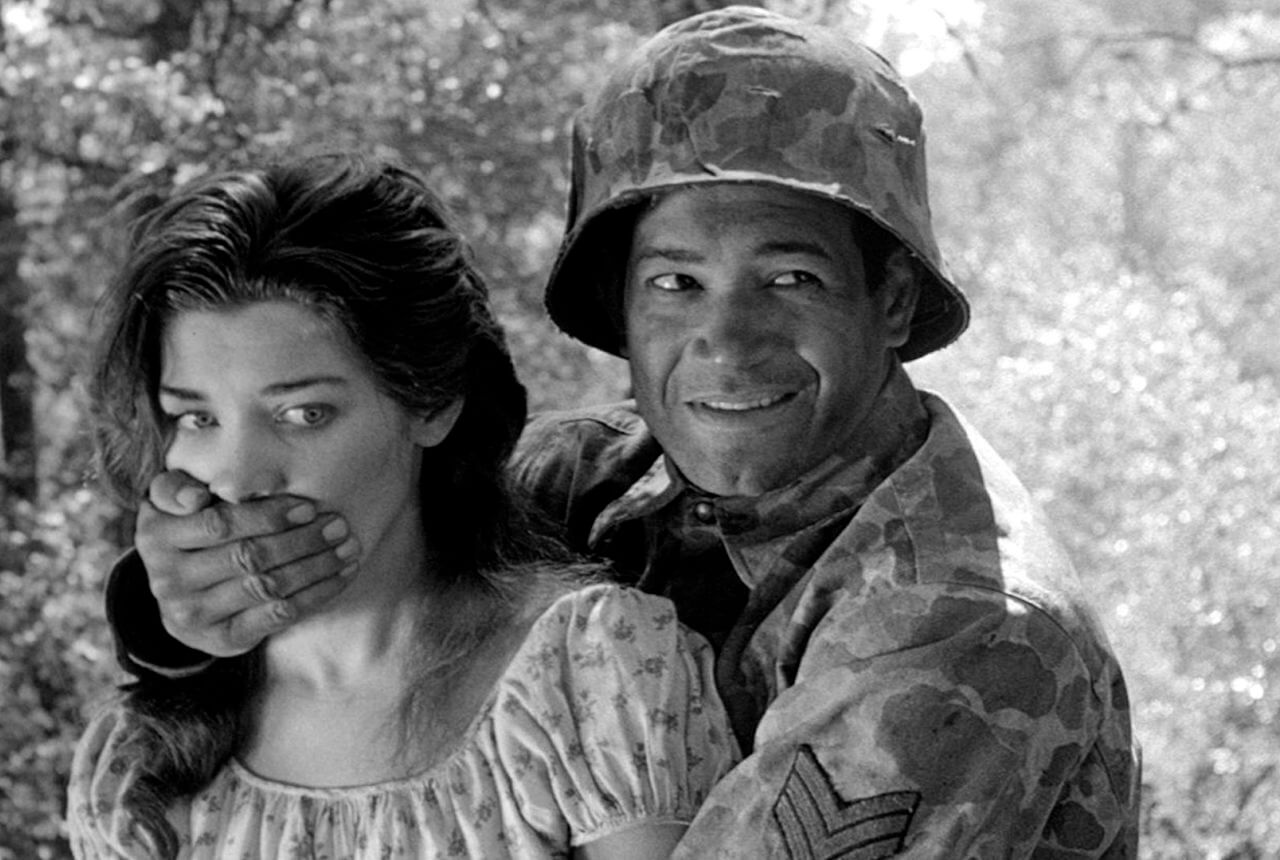
Fictional war somewhere. Four soldiers make an emergency landing a few kilometers behind the front line, in a forest in enemy territory. They plan to build a boat and sail the river towards their troops under the cover of night. The plan is thwarted by the appearance of an unknown girl and a general from enemy troops, who becomes a moving target for one of the soldiers…
Jack Kubrick cashed in his own insurance policy, Stanley additionally borrowed from his own uncle and for the collected 10,000 dollars, he made his full-length feature debut. He was only 25 years old at the time, which unfortunately shows on the screen. Fear and Desire is perfect for an anthology of the most unsuccessful debuts of later cinema masters. Despite the screenplay collaboration of the famous writer Howard Sackler, this amateur Kubrick debut was much worse than the works of film school students. And although a few moderately favorable reviews appeared in the trade press, focusing on what Kubrick knew best at the time, i.e. composition, Kubrick himself, years later, forbade any cinema and television screenings of his clumsy debut.
Additional 20,000. dollars spent on full sound (the film was shot without sound, because the director was convinced that it would be faster and cheaper) was the last straw that broke the camel’s back. But even here you can see the beginnings of Kubrick’s obsessions, splendidly developed in subsequent films. In Fear and Desire Kubrick presented the theme of dualism, tearing man on the mind-beast axis. The roles of the soldiers on both sides of the barricade were played by the same actors (one of them was the famous actor and director Paul Mazursky). The hunter was also the victim, each of them annihilating each other. One could blame the spartan conditions of this poor production even though the director did what he could, even doubling the actors, but in retrospect this is a fascinating beginning of Stanley Kubrick’s directorial thought.
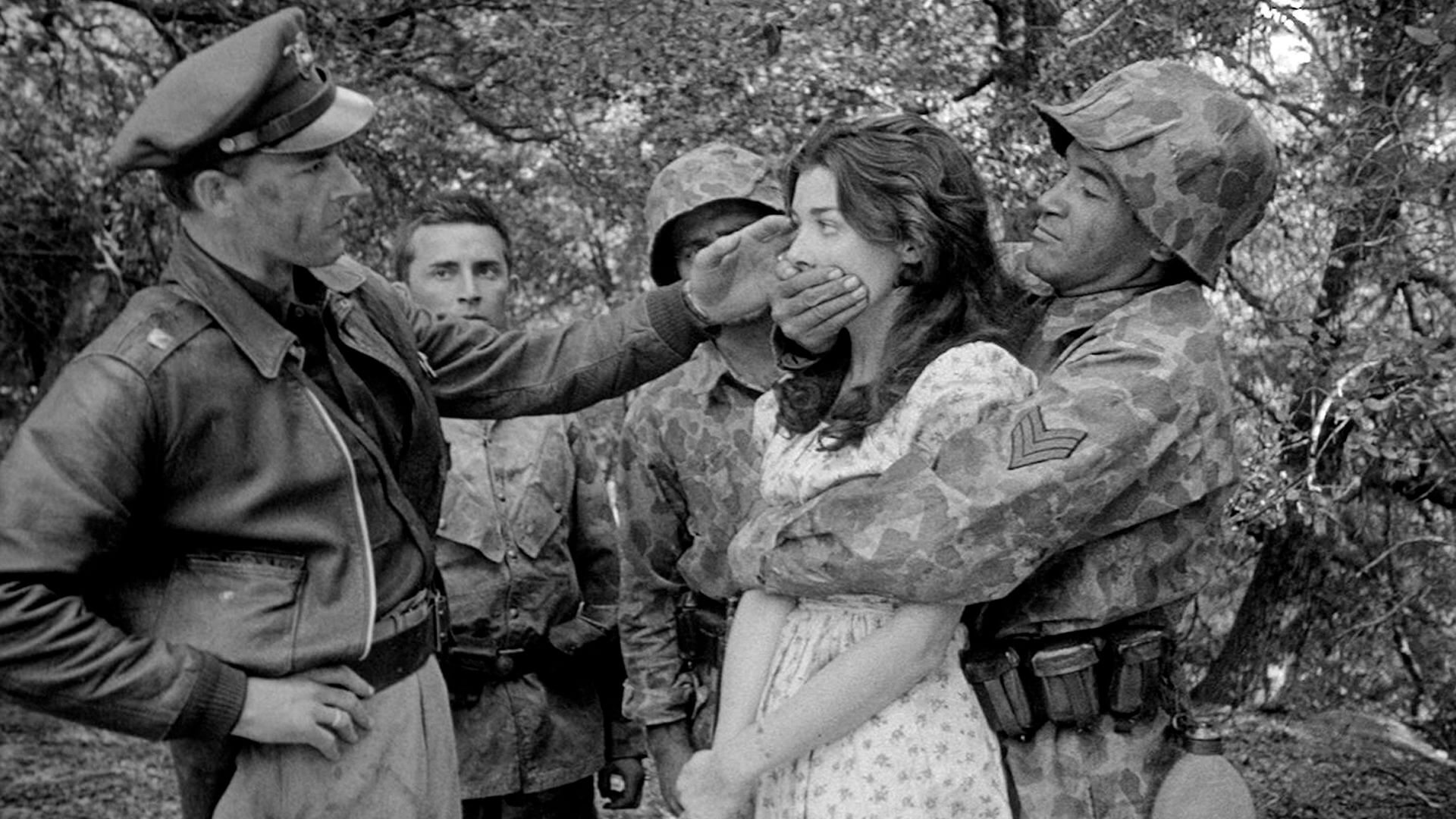
Another positive aspect of Fear and Desire was certainly the very fact of making the film. Kubrick took the first step towards his later obsessive desire for complete control over his own creation. Here, he did not have anyone to set up or direct (the team consisted of a camera operator, a lighting man, a make-up artist, a dresser, a hairdresser, a prop man, a production manager, a driver, an electrician, a friend, Kubrick’s wife dealing with paperwork, Kubrick and three Mexicans hired to carry the equipment – a total of 15 people + five actors), but he saw how the production of the film works and how far the budget can be cut. And he was still personally responsible for photography and editing. Sound-financing producer Richard de Rochemont later hired Kubrick to direct a second camera crew on the Abraham Lincoln documentary Omnibus. Catching up every paid job, Kubrick also accepted a commission from the International Sailing Union to produce and direct a half-hour promotional film, The Seafarers (1953). It was also his first color movie.
Killer's Kiss (1955)
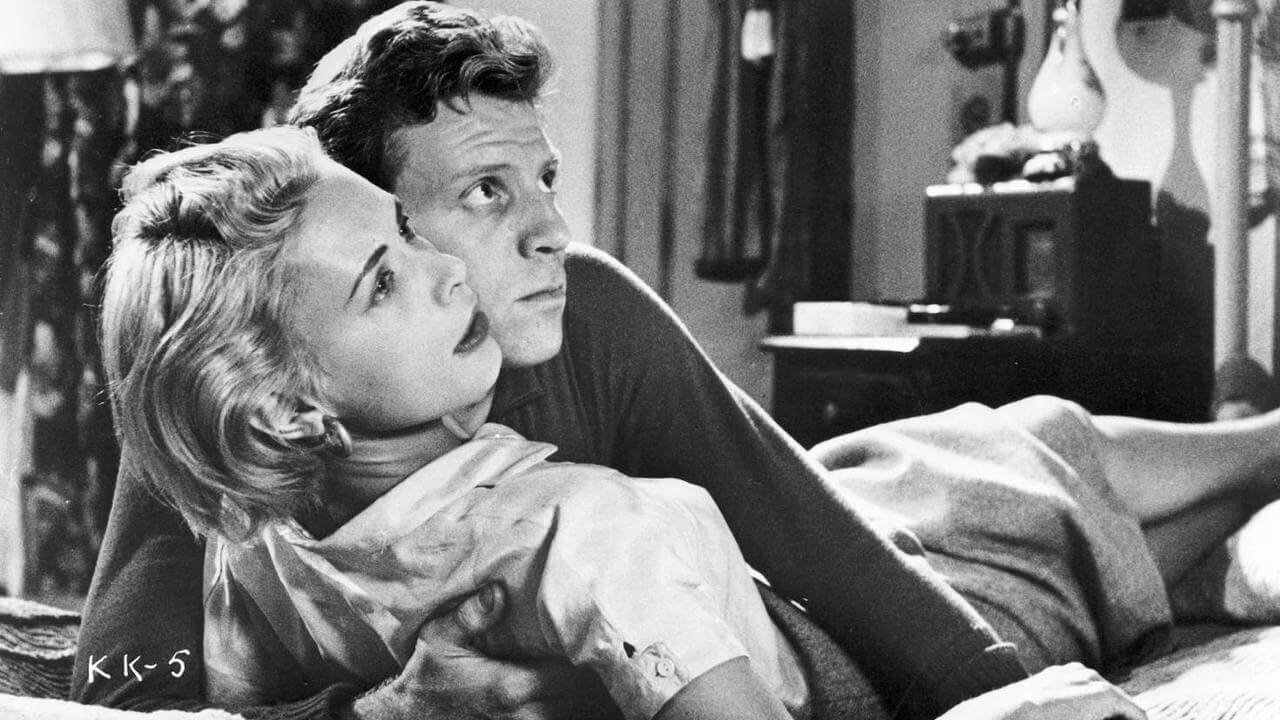
Davy, a boxer, is dating restaurant dancer Gloria, who is being harassed by her boss, Vincent. When the couple wants to go out of town and Gloria once again rejects Vincent’s proposal, Vincent sends thugs after Davy. But as a result of a mistake, the boxer’s manager dies, and the clues point to Davy. Gloria is kidnapped. Desperate, Davy reaches Vincent. The fight ensues…
Kubrick’s hopeless debut nevertheless signaled the emergence of a new man in the industry. The director wrote the script for the second time with Howard Sackler, again made a collection among the family (he exchanged his wife for a new one – he married the choreographer Ruth Sobotka on the way) and friends and with collected 40,000. dollars made a much better film noir, Killer’s Kiss, shot in a boxing circles Kubrick was familiar with.
Years later, Kubrick did not have to be ashamed of this film, although he still considered it rather a modest creative exercise than a full-fledged film. What is especially noteworthy is the excellent use of the classic film noir chiaroscuro by Kubrick himself, once again in charge of the cinematography. The problem of man’s internal struggle was stuffed into the character of a boxer, a sensitive man forced to beat people for money.
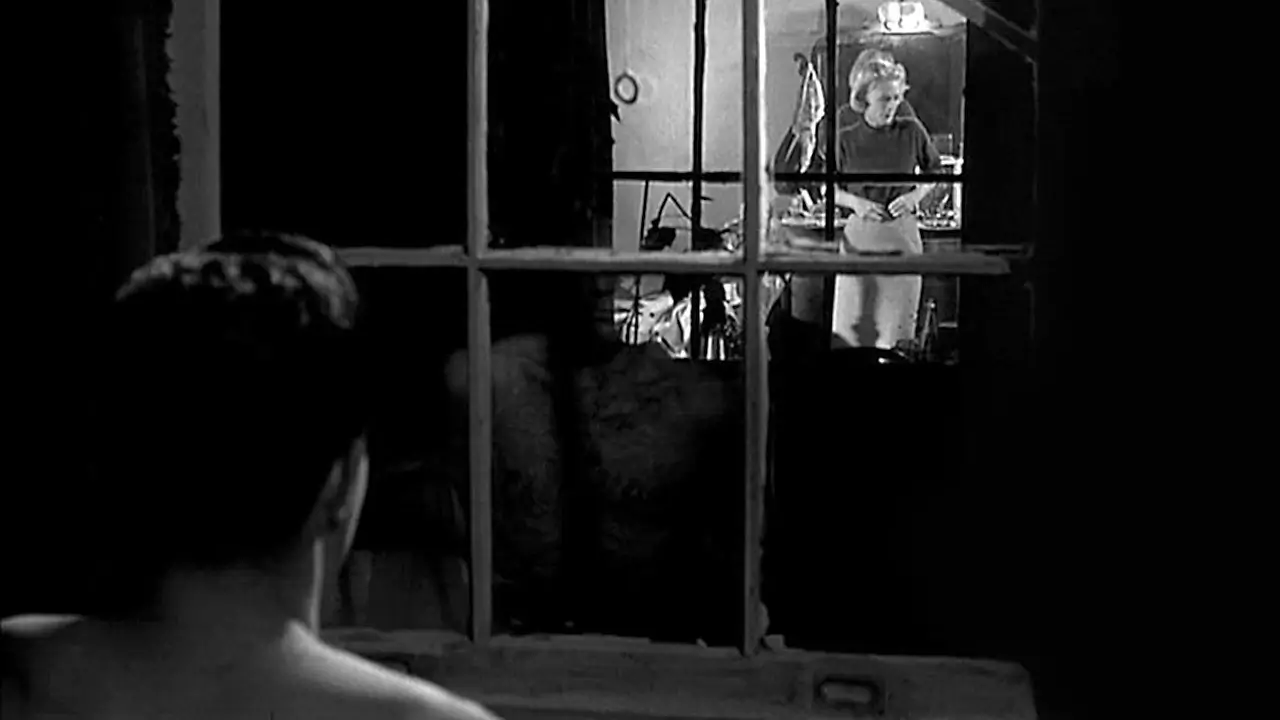
This time the working conditions were a bit more friendly. Kubrick had as many as 14 weeks to shoot, mostly on locations in New York (he was not allowed to shoot in public, but for Kubrick, who was on unemployment benefits, this was the least of the problems), full-fledged Mitchell and Eclair cameras were at his disposal, and crew salaries were kept to a minimum. When the police took interest in the Wall Street film crew, Kubrick bribed them for $ 20 per head. Like his debut, Killer’s Kiss failed at the box office. For Kubrick, this was almost obvious result, given that the idea was born out of several unrelated scenes that had to come up with the rest of the plot. For subsequent films, Stanley Kubrick will be preparing scripts with great care so as not to repeat the youthful mistake.
The Killing (1956)
Five men: Marvin, Mike, Randy, Maurice and Nikki, led by Johnny Clay, prepare the perfect plan to rob the cash registers at the racetracks. At first, everything goes perfectly. Suddenly, sniper Nikki is killed, and the lover of the wife of one of the criminals unexpectedly interferes with their plans. Clay manages to escape with a suitcase of money to the airport…
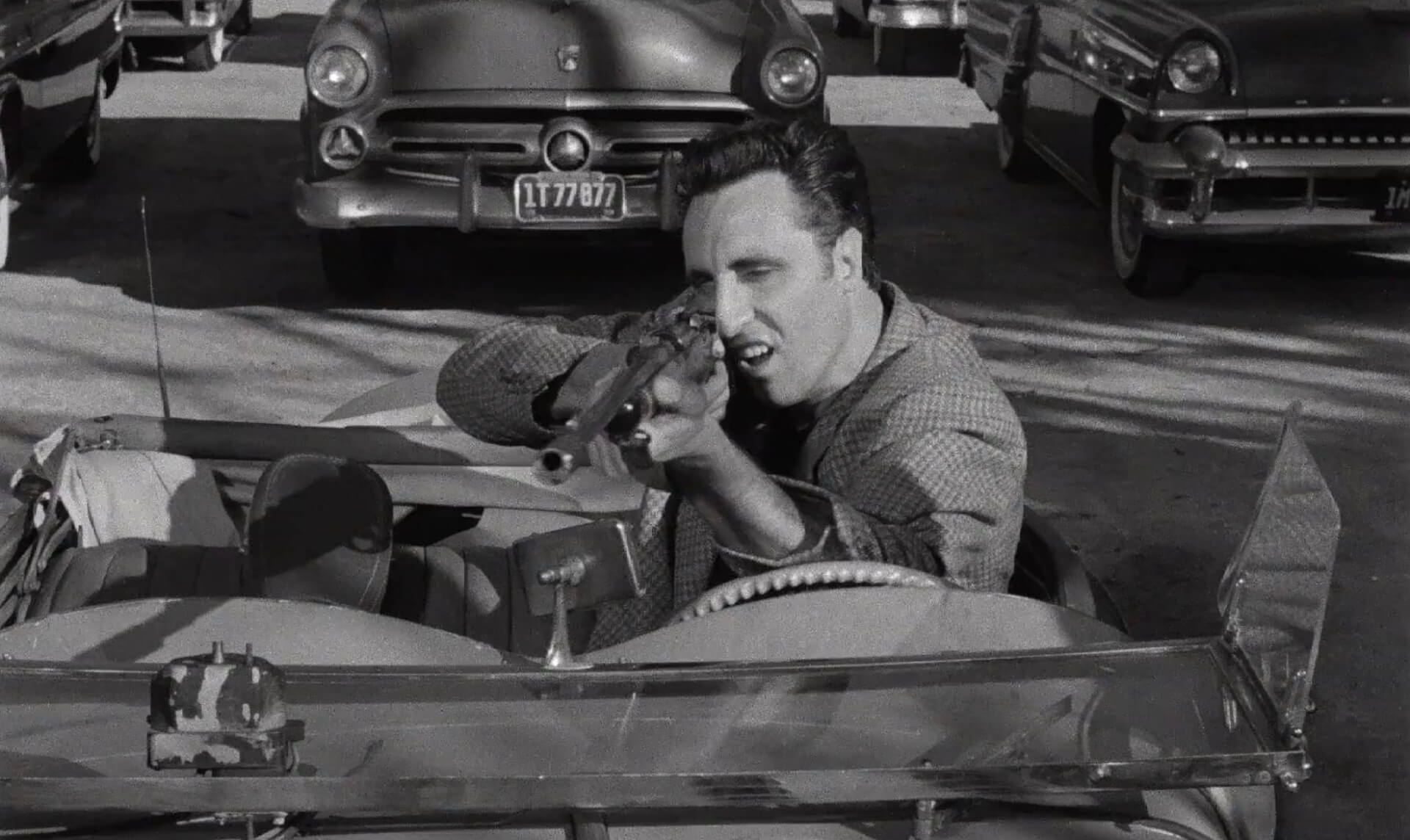
The most significant aftermath of Killer’s Kiss was Kubrick’s acquaintance with his peer, film producer James B. Harris, a man with imagination and, most importantly, with access to money. In 1955, the two founded the production company Harris-Kubrick Productions. One day, James Harris found a book by Lionel White called Clean Break, about robbing cash registers at racetracks. He showed it to Kubrick and for 10 thousand dollars bought the film rights, which he purged from under the nose of United Artists, which was planning its own film with Frank Sinatra in the lead role.
Harris then convinced United Artists to put up $320,000 dollars for the production of The Killing, the first film in Kubrick’s career, with which the demanding filmmaker was finally satisfied. The precise script was the most praised element this time. It contained a sophisticated jigsaw puzzle of flashbacks, with scenes from the robbery repeated several times, but each time from a different perspective, like in Kurosawa’s Rashomon.

This charade was initially incomprehensible, so Kubrick was forced to create an alternative version, edited linearly, which confused the plot even more. Ultimately, the original version with time shifts and repetitions hit the screens, on which Tarantino undoubtedly based his Pulp Fiction.
The production handled by James B. Harris was based on Hollywood regulations for the first time in Kubrick’s career. The director could no longer be the cinematographer too, as this was prohibited by trade union regulations. Experienced Lucien Ballard, then with almost 70 films under his belt took this responsibility. Ballard initially treated the young director with contemptuous nonchalance, but Kubrick quickly put the veteran on the line. Shooting was again planned for the New York area, but a suitable race track was found as far away as Los Angeles. It was there that The Killing was shot in 24 days after all. But the most important film of Kubrick’s early career was still ahead of him…


